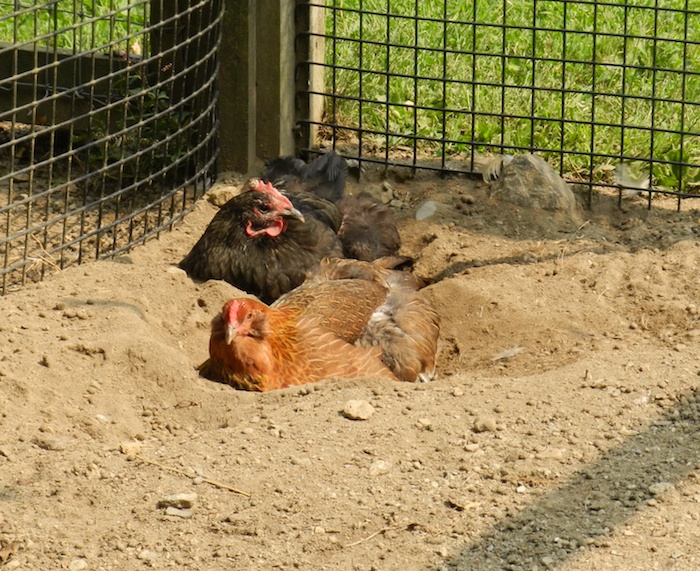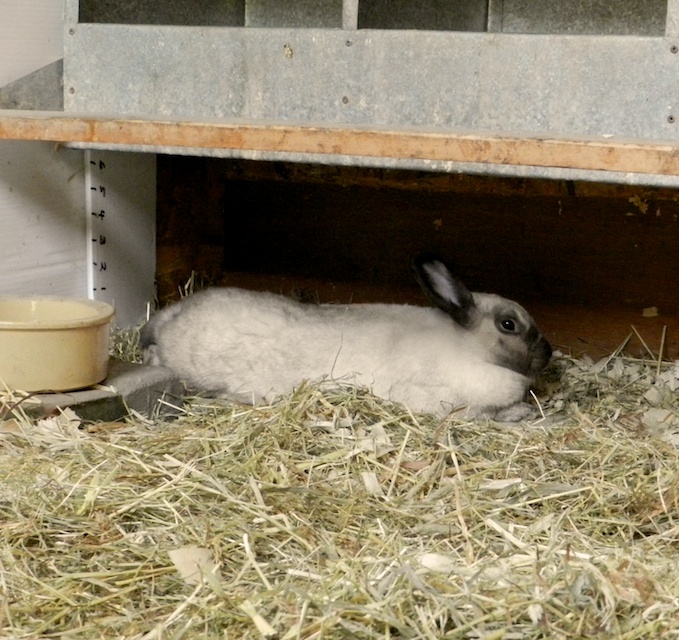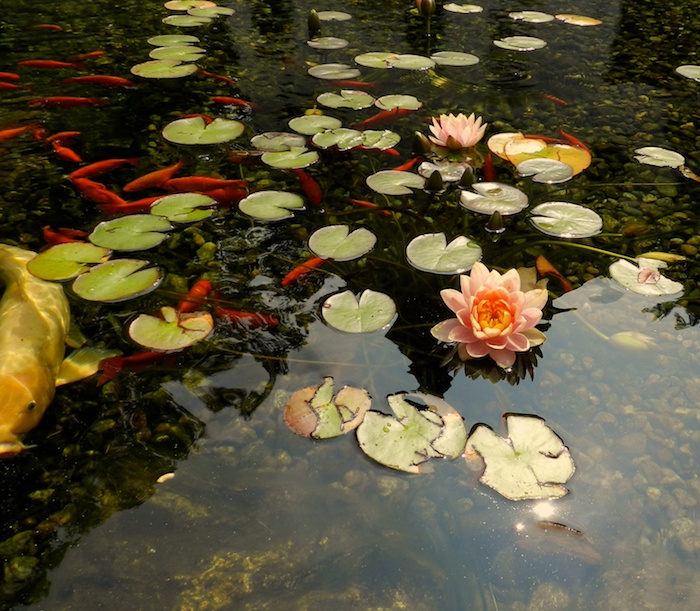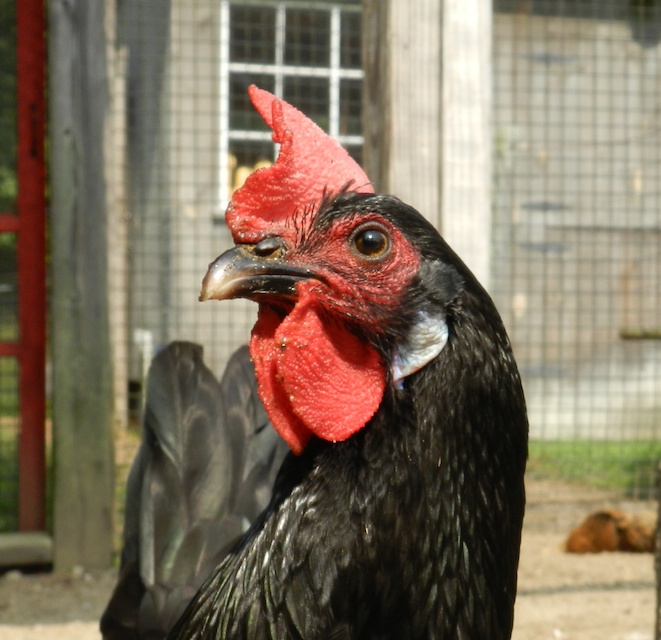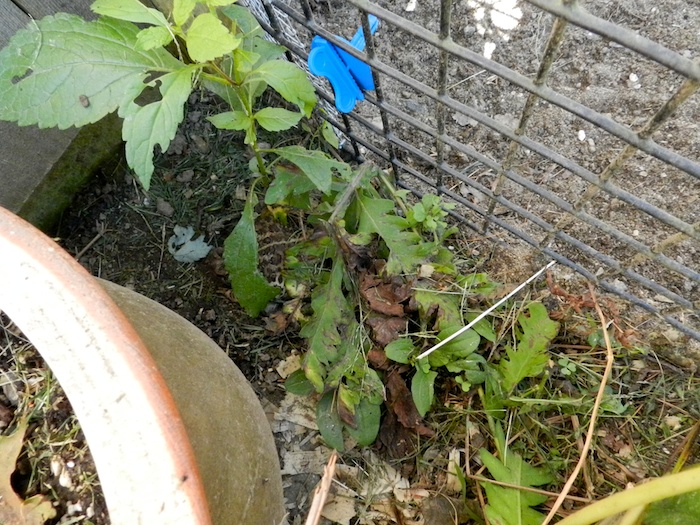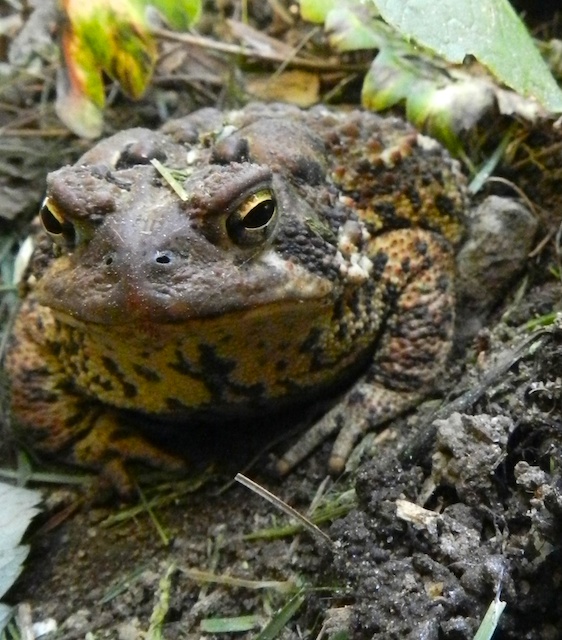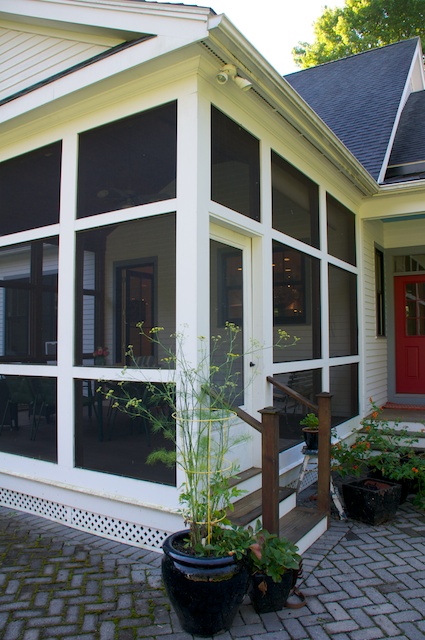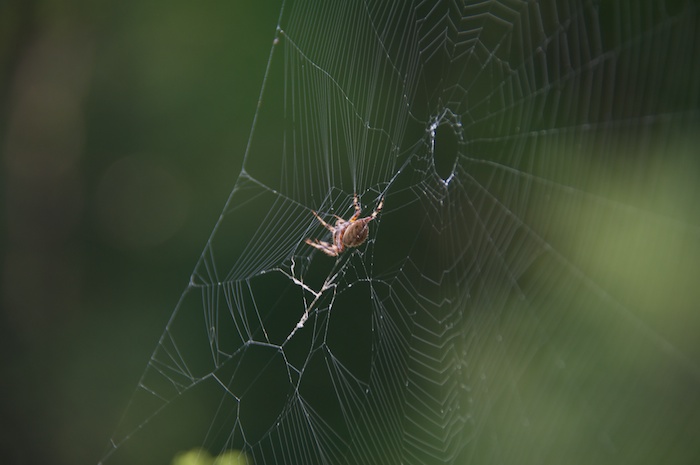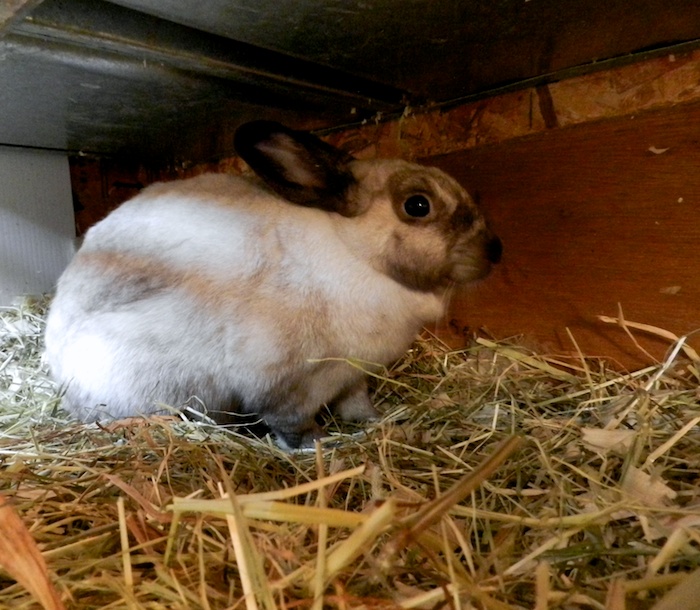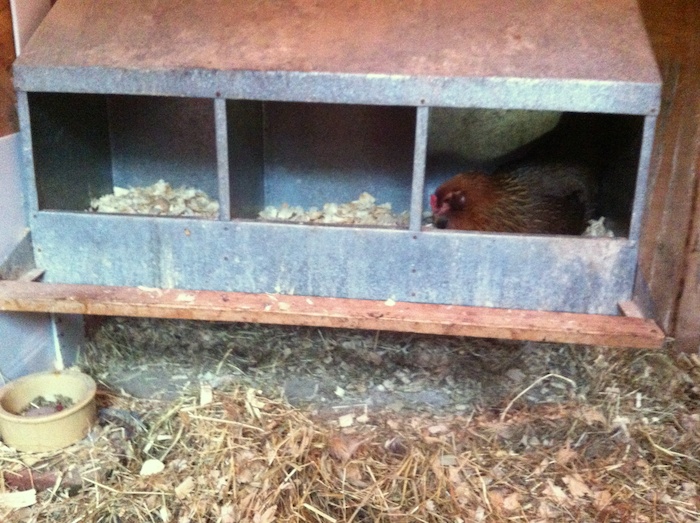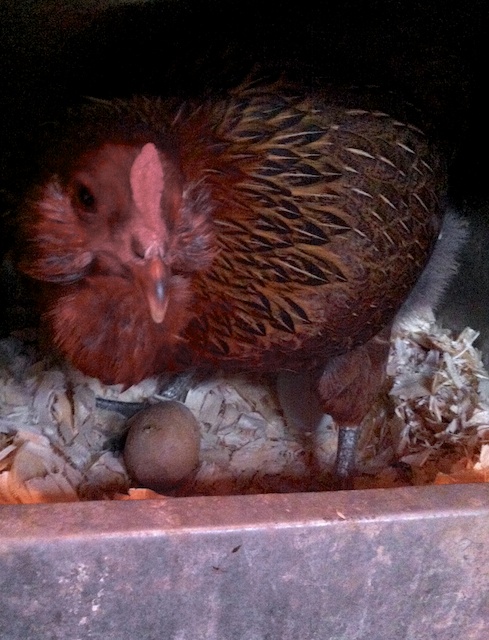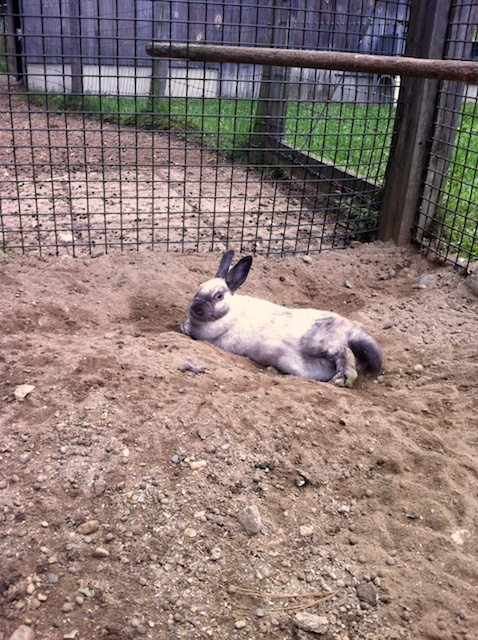This past Thursday, Boston was under a heat advisory. It was muggy and temps reached into the 90s. It was sweltering, and yet in September, you know it won’t last, and so the heat feels like a bit of a last hurrah. It was miserable, and yet even the animals seemed to tolerate it better than the oven that was midsummer.
Tomatoes (finally touched by blight) kept the hens refreshed.
Instead of staying cool in the shade, they brazenly took dust baths in the sun. (I love this photo – old Twinkydink and young Owly are companionably sharing the prime space.)
Phoebe stayed comfortable stretched out on the concrete floor of the coop.
I gave the goats an armful of water celery. It’s in bloom, but it remains crisp. The aroma is sharp and herbal, quite bracing and cooling.
The Beast and her minions were delighted with the heat. They continue to be fed through the fall, but I keep an eye on the pond temperature. When it gets below 60 degrees F, I switch to an easy to digest feed. Below 50 and I stop feeding altogether. Over the winter, the fish slowly swim in the deep, near the rock, their bellies empty. But for now, they eat with gusto. The heron has not been by, as can be seen by the quantity of gold flashing in the water. This has been a very good year for the Beast.
But, last night, we slept with the windows open and blankets on the bed. The air is crisp. We’re going apple picking.

